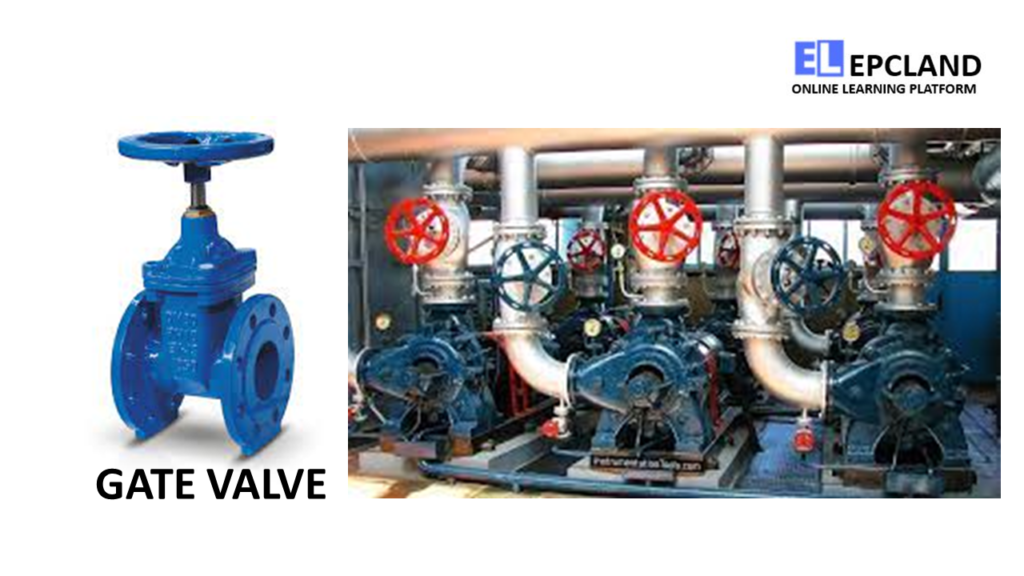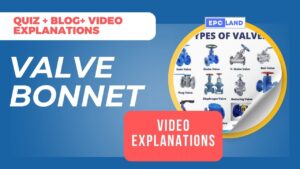Introduction
Isolation valves are essential components that hold a pivotal role across various industries, serving as fundamental devices for regulating the flow of fluids or gases. These valves are specifically designed to control the movement of substances within pipelines, systems, and machinery. By enabling the start, stop, or redirection of flow, isolation valves play a crucial role in maintaining operational efficiency, ensuring safety, and facilitating maintenance procedures.
Table of Contents
Don’t miss the Course on Isolation Valves
Enrollment Link
Significance of Isolation Valves
Isolation valves are central to the proper functioning of diverse applications, ranging from household plumbing to complex industrial processes. These valves are adept at controlling the movement of liquids, gases, or a combination of both. Their ability to effectively start, stop, or regulate flow is vital in scenarios where precision control is necessary, and inadvertent leaks or spills can lead to serious consequences.
In addition to their role in normal operations, isolation valves are pivotal in situations that demand quick and controlled shut-off. Whether it’s for scheduled maintenance, emergency repairs, or to prevent the spread of hazardous materials, isolation valves offer a mechanism to isolate specific sections of pipelines or systems, minimizing downtime and reducing the risk of accidents.
The importance of isolation valves extends beyond efficiency and maintenance. They also contribute to environmental protection by preventing the release of harmful substances into the surroundings. Moreover, these valves aid in energy conservation by allowing for the reduction of wasteful flow, leading to more sustainable and cost-effective operations.
In the subsequent sections of this article, we will delve deeper into the various types of isolation valves, their functionalities, applications, operating mechanisms, factors influencing their selection, maintenance requirements, and their overall role in ensuring the smooth operation of diverse industries. Understanding the intricate details of isolation valves will shed light on their indispensability and guide professionals in making informed decisions related to their deployment and upkeep.

Types of Isolation Valves
Isolation valves come in various designs and configurations to suit different applications and industries. Each type of valve offers distinct features and functionalities, making them suitable for specific scenarios. Here, we’ll explore some of the most common types of isolation valves:
1. Gate Valves
Gate valves are characterized by their linear motion design, where a gate-like disc moves perpendicular to the flow path to control the flow of fluids or gases. They are primarily used for full open or full closed positions, offering limited throttling capabilities.
Functionality:
- Fully Open/Closed: Gate valves provide an unobstructed flow path when fully open, minimizing pressure drop.
- Throttling Limitation: While some throttling is possible, gate valves are not well-suited for precise flow control due to potential erosion of the gate’s edge.
Common Applications:
- Water Distribution: Gate valves are commonly used in water supply systems for their ability to quickly shut off the water flow.
- Oil and Gas Pipelines: They are employed in pipelines to isolate sections for maintenance or in emergency shut-off scenarios.
2. Ball Valves
Ball valves feature a spherical ball-shaped disc with a hole in the center, which rotates to control the flow. They are known for their fast operation and good throttling capabilities.
Functionality:
- Quick Operation: Ball valves require a 90-degree rotation to switch between fully open and fully closed positions.
- Throttling Capability: The spherical design allows for precise control over the flow rate, making them suitable for applications requiring variable flow.
Common Applications:
- Household Plumbing: Ball valves are commonly used in domestic plumbing for shut-off and control of water supply.
- Industrial Processes: They are widely employed in various industries, including chemical, petrochemical, and manufacturing, where precise flow control is crucial.
Don’t miss the Course on Isolation Valves
Enrollment Link
3. Butterfly Valves
Butterfly valves use a circular disc with a rotating shaft to control the flow of fluids. They are known for their quick operation and relatively low pressure drop.
Functionality:
- Quick Operation: Butterfly valves can be opened or closed rapidly due to their simple design.
- Limited Throttling: While some throttling is possible, their design is better suited for applications where precise flow control is not critical.
Common Applications:
- HVAC Systems: Butterfly valves are commonly found in heating, ventilation, and air conditioning systems for regulating fluid flow.
- Water Treatment: They are used in water treatment plants to control the flow of water and chemicals in various processes.
4. Plug Valves
Plug valves feature a cylindrical or conical plug that can be rotated to control the flow by aligning or blocking the flow path. They are known for their simplicity and quick operation.
Functionality:
- Simple Design: Plug valves have a straightforward design with a rotating plug that directly controls flow.
- Quick Operation: They can be rapidly opened or closed with a 90-degree turn.
Common Applications:
- Chemical Processing: Plug valves are used in chemical plants for handling corrosive or abrasive fluids.
- Pharmaceuticals: They find application in the pharmaceutical industry for isolating sections of fluid transfer and processing.
In the subsequent sections of this article, we will delve into the importance and applications of isolation valves, their operating mechanisms, factors to consider during valve selection, maintenance practices, and the overall significance of these valves in various industries.
Importance and Applications
Isolation valves hold a vital role in diverse industries and applications due to their ability to control fluid and gas flow. Their significance extends beyond mere regulation, impacting efficiency, safety, and maintenance practices. Here, we’ll explore the multiple dimensions of the importance of isolation valves and their wide-ranging applications:
Fluid Control
Isolation valves serve as the gatekeepers of fluid and gas flow within pipelines and systems. Whether it’s directing the flow of water, controlling the movement of chemicals, or managing the circulation of gases, these valves ensure that substances move precisely where they’re needed, in the desired quantities. This level of control is particularly crucial in industries where precise dosage or flow rates are essential for optimal processes.
Maintenance and Repairs
When it comes to maintenance, repair, or replacement of components within a complex system, isolation valves play a pivotal role. By shutting off the flow in specific sections, these valves allow technicians and engineers to work safely without the risk of accidental spills, leaks, or exposure to hazardous materials. This not only ensures the well-being of personnel but also minimizes downtime and keeps operations running smoothly.
Safety and Emergency Shut-off
In emergency situations, the ability to shut down the flow of fluids or gases swiftly can be a matter of life and death. Isolation valves are critical components in emergency shut-off systems that prevent the spread of harmful substances, mitigate potential disasters, and protect both human lives and the environment. Whether it’s a sudden pipe rupture, a chemical leak, or a gas release, isolation valves offer a means to contain and control the situation.
Environmental Protection
The responsible management of fluids and gases is essential for environmental stewardship. Isolation valves contribute significantly to this goal by preventing the accidental release of hazardous materials into the air, water, or soil. By offering a means to isolate and control the flow, these valves aid in preventing pollution, minimizing ecological damage, and ensuring compliance with environmental regulations.
Don’t miss the Course on Isolation Valves
Enrollment Link
Energy Conservation
Uncontrolled flow of fluids or gases can lead to wastage of valuable resources and energy. Isolation valves provide the means to reduce flow rates, redirect fluids, and optimize processes. By using isolation valves to manage flow precisely and avoid unnecessary wastage, industries can achieve energy savings, cost reduction, and improved sustainability.
In the subsequent sections, we’ll delve deeper into the mechanisms that drive the operation of isolation valves, the different types of operating mechanisms available, the factors that influence valve selection, and the maintenance practices necessary to keep these crucial components in optimal condition. Through a comprehensive understanding of these aspects, professionals can make informed decisions that uphold efficiency, safety, and reliability across industries.
Operating Mechanisms and Features
Isolation valves are equipped with various operating mechanisms that determine how they function and respond to control inputs. These mechanisms range from manual operation to automated systems driven by different types of actuators. In this section, we’ll explore the different operating mechanisms of isolation valves and their features:
Manual Valves
Manual isolation valves are operated by hand through direct physical interaction. They offer simplicity, reliability, and a straightforward means of controlling fluid flow. Common mechanisms include:
- Hand Wheels: A rotating handwheel is attached to the valve stem. Turning the handwheel controls the opening and closing of the valve.
- Levers: Levers are used to control the valve’s position. They offer quick operation and are commonly found in household applications.
- Gear Mechanisms: Gears can be attached to the valve stem to provide mechanical advantage for easier operation, especially in cases of larger valves or high-pressure applications.
Advantages:
- Simplicity: Manual valves are easy to understand and operate.
- Reliability: They have fewer mechanical components that can fail compared to automated systems.
Limitations:
- Slower Operation: Manual operation can be slower, especially for larger valves or when precise control is needed.
- Human Intervention Required: Manual valves require physical presence for operation, which can be limiting in certain scenarios.
Actuated Valves
Actuated isolation valves use external mechanisms, such as electric, pneumatic, or hydraulic actuators, to control valve position. These mechanisms enable remote operation and faster response times.
- Electric Actuators: These use electric motors to drive valve movement. They are suitable for applications where precise control and automation are required.
- Pneumatic Actuators: Pneumatic actuators use compressed air to drive valve movement. They are known for their quick response and suitability for hazardous environments.
- Hydraulic Actuators: Hydraulic actuators use pressurized fluid to control valve position. They offer high force capabilities and precise control.
Advantages:
- Remote Operation: Actuated valves can be controlled from a distance, allowing for automation and control integration.
- Faster Response: Actuators provide quicker response times compared to manual operation.
Limitations:
- Complexity: Actuated valves have more components and potential points of failure, leading to increased complexity.
- Mechanical Failures: Actuators can experience mechanical failures that require maintenance or replacement.
Understanding the operating mechanisms of isolation valves is crucial for selecting the right valve type based on application requirements. In the upcoming sections, we’ll delve into the various factors that influence the selection of isolation valves, such as application needs, material compatibility, and environmental conditions. Additionally, we’ll explore the maintenance practices necessary to keep isolation valves functioning optimally.
Don’t miss the Course on Isolation Valves
Enrollment Link
Factors Affecting Valve Selection
Selecting the appropriate isolation valve for a specific application involves considering various factors to ensure optimal performance, reliability, and safety. Here, we’ll explore the key factors that influence the selection of isolation valves:
1. Application Requirements
Flow Rate: The required flow rate determines the size of the valve. Oversized valves can lead to inefficiencies, while undersized valves can cause excessive pressure drops.
Pressure Rating: The operating pressure of the system dictates the valve’s pressure rating. It’s important to choose a valve that can handle the system’s maximum pressure.
Temperature: Valves must be compatible with the temperature of the fluid or gas they’ll be handling. Extreme temperatures can affect valve materials and performance.
Fluid Characteristics: Consider the nature of the fluid or gas, such as corrosiveness, viscosity, and erosive potential. Valves must be made from materials that can withstand these characteristics.
Throttling Needs: If precise flow control is required, valves with good throttling capabilities should be chosen.
2. Material Compatibility
Valve materials must be compatible with the fluids or gases they will encounter. Corrosion, erosion, and chemical compatibility should be considered to prevent premature valve failure.
3. Environmental Conditions
Temperature Extremes: Valves exposed to extreme temperatures must be designed to handle thermal expansion and contraction without losing functionality.
Abrasive Conditions: In environments with abrasive particles, valves with hardened surfaces or coatings should be considered to resist wear.
Chemical Exposure: Valves in chemical processing plants should be resistant to the specific chemicals they’ll come into contact with.
4. System Design and Space Constraints
The valve’s design and size must fit within the system’s layout and available space. Gate valves might require more space for their linear movement, while ball valves require less space due to their rotational motion.
5. Industry Standards and Regulations
Different industries have specific standards and regulations that dictate valve requirements. Compliance with these standards ensures safety and reliability.
6. Maintenance and Accessibility
Consider how easily the valve can be accessed for maintenance, repair, or replacement. Valves in hard-to-reach locations might require more robust materials or actuated mechanisms for remote operation.
7. Cost Considerations
Balancing performance and features with cost is essential. While higher-quality valves might come with a higher upfront cost, they often lead to lower maintenance and replacement costs over time.
By carefully evaluating these factors, engineers and professionals can make informed decisions about which type of isolation valve is best suited for a given application. In the subsequent sections, we’ll delve into the maintenance practices required to keep isolation valves functioning effectively and the overall significance of these valves in various industries.
Don’t miss the Course on Isolation Valves
Enrollment Link
Maintenance and Preventive Measures
Proper maintenance of isolation valves is essential to ensure their longevity, reliability, and continued functionality. Neglecting maintenance can lead to leaks, decreased efficiency, and even safety hazards. In this section, we’ll explore the maintenance practices and preventive measures necessary to keep isolation valves in optimal condition:
Regular Inspection
Routine visual and operational inspections are crucial to identify any signs of wear, damage, or leakage. Inspections should include checking for:
- Leakage around the valve seat or stem.
- Corrosion or erosion of valve components.
- Proper sealing and gasket conditions.
Lubrication
Valve components, especially moving parts, require proper lubrication to reduce friction and ensure smooth operation. Lubrication helps prevent wear and extends the valve’s lifespan.
Component Replacement
Any worn or damaged components should be promptly replaced. This includes gaskets, seals, stems, and other valve parts that may degrade over time.
Calibration and Testing
For valves requiring precise flow control, regular calibration and testing ensure that the valve’s performance matches the desired specifications. This is particularly important for industries where accuracy is crucial.
Adhering to Manufacturer Guidelines
Follow the manufacturer’s recommended maintenance schedule and guidelines. Manufacturers provide instructions on proper operation, maintenance, and recommended replacement intervals for components.
Addressing Corrosion and Erosion
In environments prone to corrosion or erosion, consider using valves made from corrosion-resistant materials or adding protective coatings to extend the valve’s lifespan.
Training and Personnel
Ensure that personnel responsible for valve maintenance are trained in proper procedures. Proper handling and maintenance can prevent accidental damage during routine activities.
Emergency Response Plans
Develop and communicate emergency response plans that detail procedures for shutting off valves in case of leaks, spills, or other emergency situations.
By implementing these maintenance practices and measures, industries can maximize the lifespan and efficiency of isolation valves, minimize downtime, and maintain safe and reliable operations. In the final section of this article, we’ll summarize the key takeaways and emphasize the overall significance of isolation valves in various industries.
Don’t miss the Course on Isolation Valves
Enrollment Link
Conclusion
Isolation valves stand as indispensable components across a wide array of industries, enabling precise control over fluid and gas flow. Their significance extends beyond routine operation, playing critical roles in maintenance, safety, and environmental protection. As we’ve explored throughout this article, isolation valves contribute to the efficiency, reliability, and sustainability of various processes and systems.
From gate valves that offer quick shut-off capabilities to ball valves allowing precise flow control, each type of isolation valve serves a specific purpose. The ability to isolate sections of pipelines for maintenance, prevent catastrophic leaks, and control flow rates makes these valves integral to the functioning of industries such as water distribution, manufacturing, energy production, and more.
The mechanisms used to operate isolation valves, whether manual or actuated, provide flexibility in terms of control and responsiveness. This, coupled with careful consideration of factors such as application requirements, material compatibility, and environmental conditions, empowers engineers and professionals to make informed decisions when selecting isolation valves.
Maintenance practices, including regular inspections, lubrication, and timely component replacement, are essential to ensure the optimal performance and longevity of these valves. Through adherence to industry standards, personnel training, and emergency response plans, industries can further enhance the safety and reliability of their operations.
In summary, isolation valves form the backbone of fluid and gas management across industries, contributing to efficiency, safety, and environmental responsibility. By understanding their functionalities, applications, and maintenance needs, professionals can harness the full potential of isolation valves to uphold operational excellence and meet the challenges of a rapidly evolving industrial landscape.
FAQs
Frequently asked questions (FAQs) related to isolation valves:
- What is the purpose of an isolation valve?Isolation valves are designed to control and regulate the flow of fluids or gases within pipelines and systems. They serve as crucial components that can start, stop, or redirect flow, making them essential for maintenance, safety, and efficient operation in various industries.
- What are the different types of isolation valves?There are several types of isolation valves, including gate valves, ball valves, butterfly valves, and plug valves. Each type has unique characteristics and applications. For example, gate valves are used for on/off control, ball valves offer precise flow control, butterfly valves are quick-acting with lower pressure drops, and plug valves have simple designs for various applications.
- How do I choose the right isolation valve for my application?Selecting the appropriate isolation valve involves considering factors like flow rate, pressure, temperature, fluid characteristics, material compatibility, environmental conditions, and industry regulations. By evaluating these factors, you can determine the most suitable valve type and design for your specific needs.
- What are the benefits of using automated (actuated) isolation valves?Actuated isolation valves, operated by electric, pneumatic, or hydraulic actuators, offer remote operation, faster response times, and the ability to integrate with control systems. They are particularly useful in scenarios where manual operation is impractical, such as hard-to-reach locations or situations requiring rapid shut-off.
- How important is maintenance for isolation valves?Maintenance is crucial for the optimal performance and longevity of isolation valves. Regular inspections, lubrication, component replacement, and adherence to manufacturer guidelines help prevent leaks, wear, and failures. Well-maintained valves contribute to operational efficiency, safety, and cost-effectiveness.
Don’t miss the Course on Isolation Valves
Enrollment Link
Recommended courses (Published on EPCLand)
- Basics of Piping Engineering
- Piping Layout Engineering
- Piping Material Engineering
- Piping Stress Analysis
- Complete Course on Piping Engineering
- Material Requisitions
- Piping Material Specifications
- Valve Material Specifications
Don’t miss the published articles on following:
Related Video
Attempt Quiz
Question 1:
What is the primary purpose of an isolation valve?
Explanation: The primary purpose of an isolation valve is to prevent fluid flow by closing off the passage and isolating a section of the pipeline or system.
Question 2:
What type of valve is commonly used as an isolation valve?
Explanation: Gate valves are commonly used as isolation valves due to their ability to provide tight shutoff by using a gate or wedge mechanism to block fluid flow.
Question 3:
When might an isolation valve be used in an industrial setting?
Explanation: An isolation valve might be used to shut off flow during maintenance, repair, or emergencies, ensuring the safety of personnel and equipment.
Question 4:
What is a common location for isolation valves in a piping system?
Explanation: Isolation valves are often placed before and after equipment, such as pumps, tanks, and valves, to allow for easy isolation and maintenance of the equipment.
Question 5:
Why is proper maintenance of isolation valves important?
Explanation: Proper maintenance of isolation valves is important to prevent equipment corrosion, ensure reliable operation, and minimize the risk of leaks or failures in the system.



